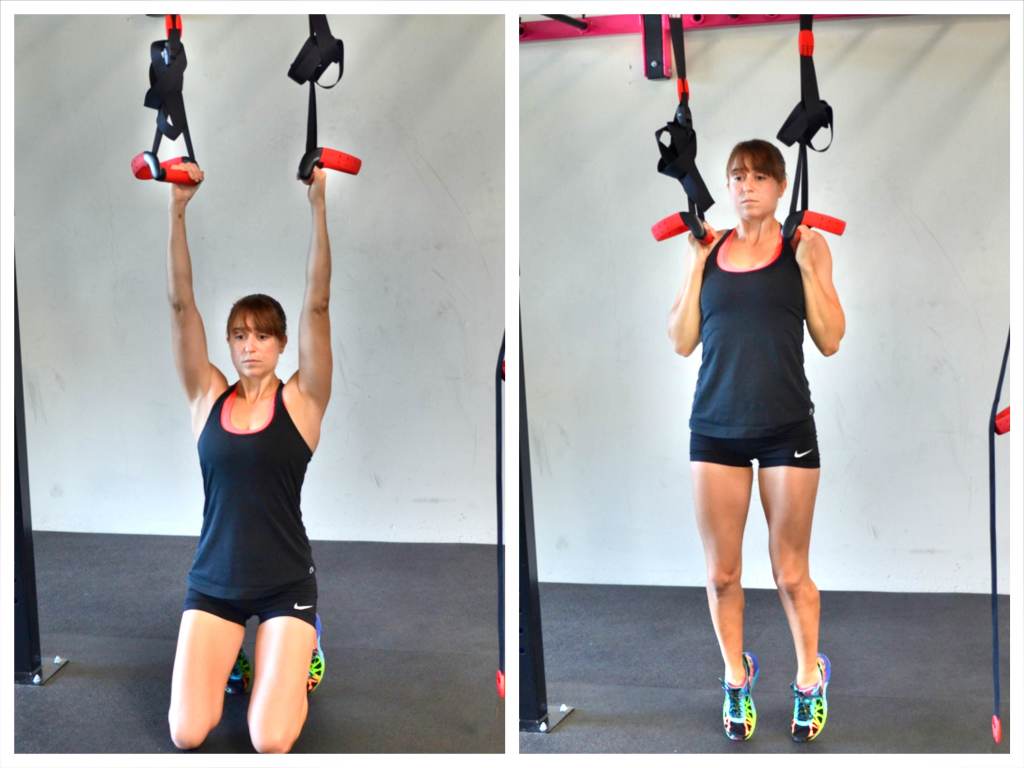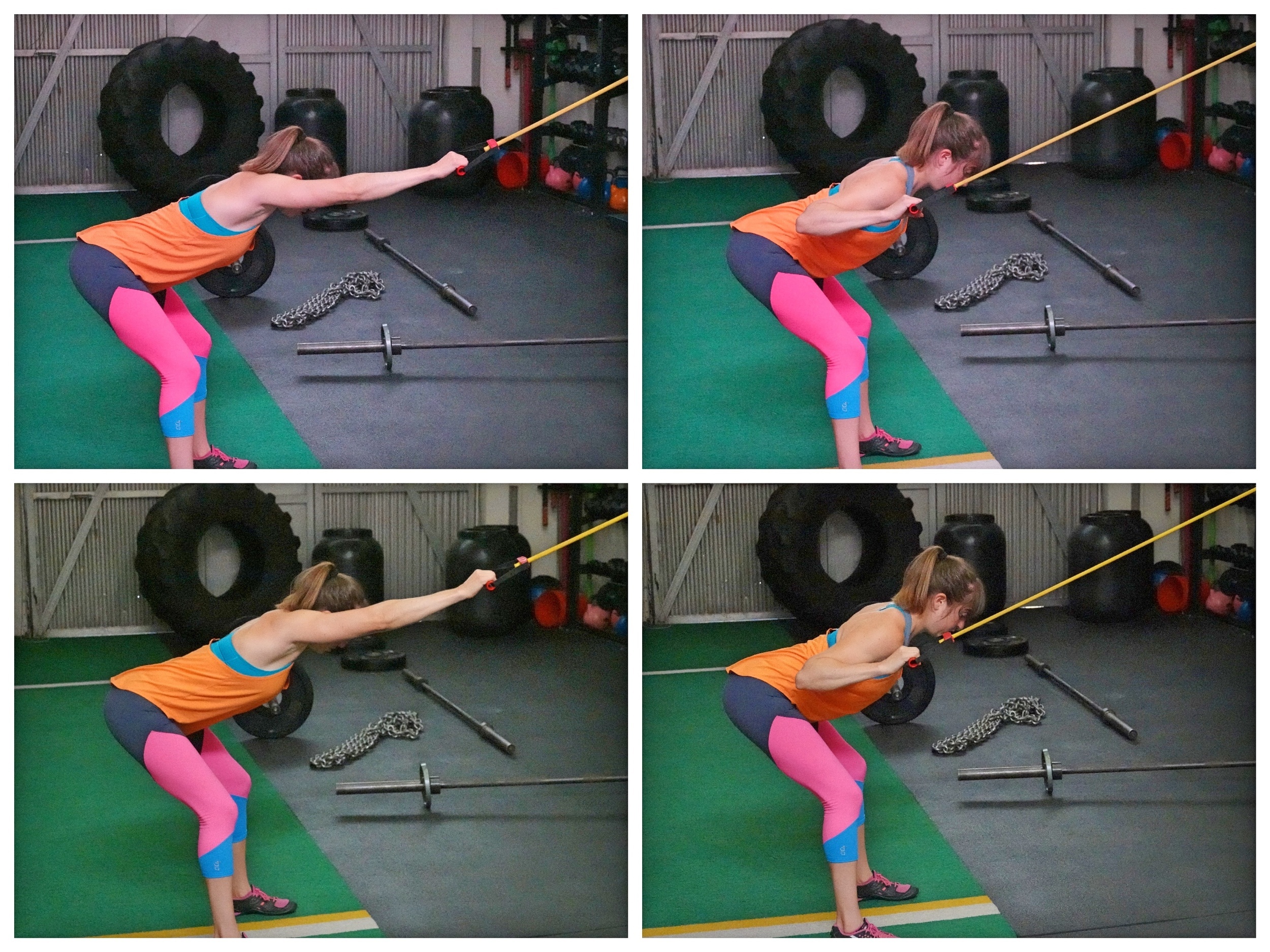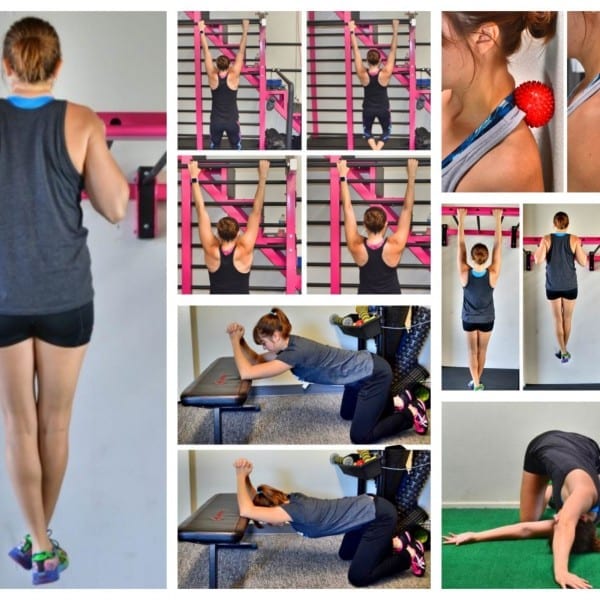
Can’t Do Pull Ups? Just Do This!
The pull up is an amazing, and challenging, bodyweight back exercise.
And too often we simply throw up our hands and say “I can’t do a pull up” then completely avoid the movement.
Or we say we’re too old, too heavy, our arms are too long…pick an excuse….we make it!
But there is an amazing way to modify this move to practice that vertical pull and build up your grip, arm and back strength while working on your scapular mobility.
And NO it’s not the band pull up.
So what variation of the pull up do I love to use and why do I avoid the band pull up if possible?
And what are three key moves to help you build up to that first full one?
Avoiding the Band Pull Up:
So often we turn to bands for assistance. But band assisted pull ups have one major drawback…
They give you assistance in a way that you don’t have to learn that initial scapular movement and engagement of your back.
They put you ABOVE that dead hang so that you don’t learn how to initiate scapular depression to go from that dead hang to engaged.
It can also be hard to really adjust the tension fully to exactly what you need, especially as you fatigue.
That’s why I prefer the Foot Assisted variation.
Why I Love The Foot Assisted Pull Up:

Using just your feet, you can provide only as much assistance as you need to feel your back working. And as you fatigue, you can adjust.
While you don’t want to turn this into a lower body move, using your toes to assist can allow you to reduce the resistance on your upper body to focus on your back pulling.
AND you can work through that full range of motion, applying more or less resistance at stick points in the exercise.
It can also allow you to slow down the tempo or use just the foot assistance on the way up before performing a slow eccentric lower, even without using your feet!
Focusing on the eccentric can allow you to use a more advanced variation to build up than you may be able to control for the full movement because we are generally stronger during the eccentric portion of a lift!
And when you slow down the tempo, you can spend more time under tension to improve your strength and control!
Three Key Accessory Moves:
As you work on your pull ups, these are 3 key accessory moves that can help you target imbalances, improve your scapular control and strengthen your grip and abs! They are perfect moves to include in your circuits or sets after your intial pull up skill work.
1: Mini Pull Ups

If you’ve ever thought, “If I could just jump over that initial part, I could do one.” You need to include mini pull ups in your routine.
This is the perfect way to learn how to depress your shoulder blades and engage your back so you power the pull with your back.
Do not rush this move and really focus on leading with your chest.
Do not bend your arms to try to make the movement bigger. Often we want to use our biceps to power the pull, but this move helps us avoid doing that.
Focus on engaging your back and drawing your shoulder blades down toward your back pockets. Think about slightly opening your chest up toward the bar as you think about unshrugging your shoulders.
And if you need to modify to control the move, try a foot-assisted variation!
2: Single Arm Lat Pulldown

Strengthen your back and improve your scapular control with this unilateral move that will also help you correct any imbalances.
Especially if you’ve ever had a shoulder injury, this is a key move to help you avoid injury as you work on your pull ups.
I love using a band for this move as it will apply more resistance where your lats are strongest. It applies more resistance at the end range of motion.
Just make sure you don’t push down on the band as you perform the move and turn this into a tricep exercise. Think about driving your elbows back and toward your hip. Feel your shoulder blade move down as you pull.
Then fully extend out as you reach back overhead to take your shoulder blade through a full range of motion.
You want to make sure too that you’re mimicking a vertical pull. Don’t turn this into a row. Focus on that hinge and thoracic extension so your arm moves in line with your spine.
3: Hanging Abs

Often we don’t recognize how core intensive the pull up is.
But if we want to improve our pull ups, we need to build up our core strength.
Hanging abs are a great way to do just that. They can improve your grip and core strength at the same time. They even can help you work on that initial back engagement.
Make sure to engage your back as you perform these hanging ab exercises. It will also help you prevent yourself from swinging a ton.
If you need to start by modifying because you can’t control the move, you can do a variation lying on the ground, holding on to a pole behind you. This will allow you to still engage your back and better activate your abs as you raise your legs or tuck your knees in.
Using these three moves, and the foot assisted pull up variation, you can improve your pull ups and start working toward that first full one!
Ready to rock those pull ups? Take my 30-Day Pull Up Challenge!



